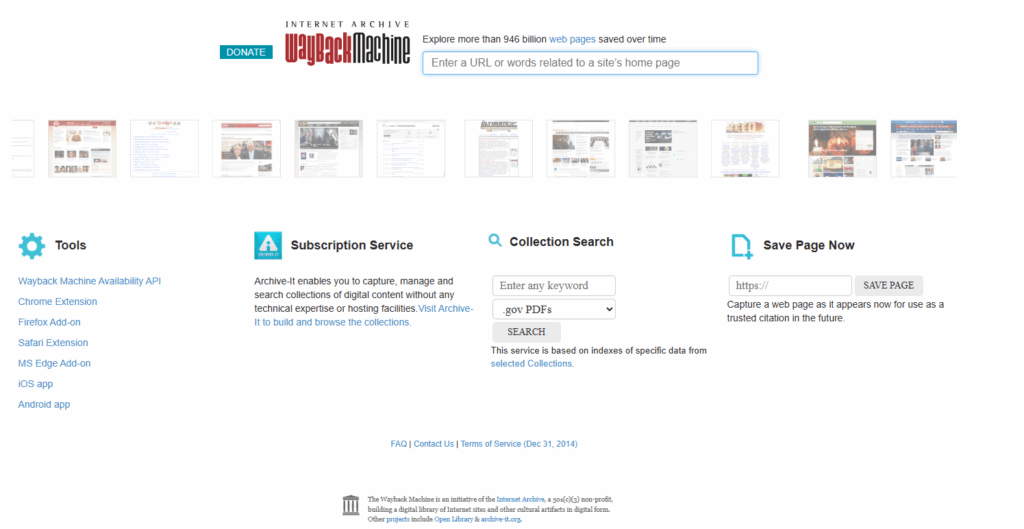- Joined
- Oct 12, 2023
- Messages
- 177
- Reaction score
- 32
You’ve finally found the name that fits your business perfectly – short, memorable, and exactly matching your desired brand name. The only downside: this domain name is already taken by someone else.
That moment happens to nearly everyone starting a new business online. The good news? A taken domain doesn’t have to mean the end of the story. In many cases, you can buy a domain name someone already owns – it just takes a bit of strategy.
Domain names work on a “first come, first served” basis – and whoever registers it has control over it until they decide to sell, transfer, or let it expire.
Sometimes that person is running a business. Other times, they bought it years ago as an investment or for domain parking. In rare cases, the domain was once used but is now just sitting idle.
It can also happen if someone forgot to renew their domain, especially if it’s catchy or brandable.
Importantly, even if you already registered a business with a specific name, it doesn’t mean you automatically have rights to an exact match domain – someone might be already using it for a completely different line of business.

Source: Unsplash
Before making any move, you’ll want to confirm who currently owns the domain. A WHOIS lookup can tell you that in seconds. If ownership details are hidden, most registrars have a contact form that forwards messages to the owner privately.
Use some tips on how to find out who owns a domain name – there is a good chance you’ll locate an owner quite easily. You’ll also find real experiences in those discussions on Quora and Reddit, where people share how they tracked down domain owners who weren’t easy to reach.
Type the domain name into your browser and see what appears. If it leads to a live website, that tells you the owner is actively using it. If it goes to a blank page, a “for sale” notice, or an unrelated landing page, there may be room for negotiation.
It’s also smart to look up its history using tools like the Wayback Machine or Ahrefs. A check like this helps ensure the domain hasn’t been tied to spam or other activity that could hurt your reputation later.

Source: Wayback Machine
Once you’ve confirmed the domain’s details, you have two main options:
Reach out directly.
You can send a short, polite email explaining that you’re interested in buying the domain. Don’t lead with your full budget – simply ask if they’d consider selling and what price range they have in mind.
Hire a broker.
If you’d rather stay anonymous or want help negotiating, domain brokers do this every day. They’ll approach the owner on your behalf, keep emotions out of the process, and often get better terms than a direct buyer can. Domain brokerage services can be procured via known registrars, such as GoDaddy or Sedo.
The value of a domain name can range from under $100 to tens of thousands of dollars. The price depends on factors like length, keywords, and whether it’s a strong commercial term.
If you’re new to buying, it helps to look up recent sales of similar names on marketplaces like Sedo or Afternic to get a sense of fair value.
Before agreeing to anything, make sure you understand common domain buying mistakes. That includes paying before verifying ownership or skipping the escrow process.

Source: Unsplash
When both sides agree on a price, use a secure transaction method. Escrow services, such as Escrow.com or a registrar’s in-house transfer option, protect both parties. The service holds your payment until the seller completes the transfer, and then releases the funds.
Once the transfer is done, update your contact details, lock the domain, and set it to auto-renew. That small step can save you future stress – as covered in how not to lose your domain name.
Sometimes you’ll get no reply at all, or the owner simply says no. In that case, consider:
But don’t get obsessed. It’s not always about the exact name – it’s more important that people can remember and trust the business behind.
Buying a domain name that’s already taken is a mix of research, negotiation, and timing. Some deals close in a week; others take months. But with patience, most business owners find a path that works for them – whether that means securing the exact name or finding a creative alternative.
If another person owns your desired domain, you can reach out directly or through a broker to ask if they’re open to selling. If they’re not, you can register a variation or wait to see if it expires.
Identify the owner through a WHOIS search, then make contact. If they agree to sell, complete the purchase through a secure escrow service before the ownership transfer.
You can look for a similar option or a different domain extension, such as .it.com. Some buyers also monitor the domain in case it becomes available later.
Domain ownership can’t be changed without the current owner’s consent. After buying the domain, request a transfer through the registrar. A registrar must process a verified transfer request before a domain changes hands. Once the previous owner releases it, the record updates to reflect your details as the new owner.
If your trademark or brand is being misused, you can file a claim through the Uniform Domain-Name Dispute-Resolution Policy (UDRP). Legal support is strongly recommended before filing.
Want to learn more about domain names? Visit it.com Domains blog and contact us on social media.
Continue reading on the it.com Domains blog...
That moment happens to nearly everyone starting a new business online. The good news? A taken domain doesn’t have to mean the end of the story. In many cases, you can buy a domain name someone already owns – it just takes a bit of strategy.
Why Your Domain Name Might Be Taken
Domain names work on a “first come, first served” basis – and whoever registers it has control over it until they decide to sell, transfer, or let it expire.
Sometimes that person is running a business. Other times, they bought it years ago as an investment or for domain parking. In rare cases, the domain was once used but is now just sitting idle.
It can also happen if someone forgot to renew their domain, especially if it’s catchy or brandable.
Importantly, even if you already registered a business with a specific name, it doesn’t mean you automatically have rights to an exact match domain – someone might be already using it for a completely different line of business.

Source: Unsplash
Step 1: Find Out the Current Owner
Before making any move, you’ll want to confirm who currently owns the domain. A WHOIS lookup can tell you that in seconds. If ownership details are hidden, most registrars have a contact form that forwards messages to the owner privately.
Use some tips on how to find out who owns a domain name – there is a good chance you’ll locate an owner quite easily. You’ll also find real experiences in those discussions on Quora and Reddit, where people share how they tracked down domain owners who weren’t easy to reach.
Step 2: Check What the Domain Is Being Used For
Type the domain name into your browser and see what appears. If it leads to a live website, that tells you the owner is actively using it. If it goes to a blank page, a “for sale” notice, or an unrelated landing page, there may be room for negotiation.
It’s also smart to look up its history using tools like the Wayback Machine or Ahrefs. A check like this helps ensure the domain hasn’t been tied to spam or other activity that could hurt your reputation later.

Source: Wayback Machine
Step 3: Decide How to Engage
Once you’ve confirmed the domain’s details, you have two main options:
Reach out directly.
You can send a short, polite email explaining that you’re interested in buying the domain. Don’t lead with your full budget – simply ask if they’d consider selling and what price range they have in mind.
Hire a broker.
If you’d rather stay anonymous or want help negotiating, domain brokers do this every day. They’ll approach the owner on your behalf, keep emotions out of the process, and often get better terms than a direct buyer can. Domain brokerage services can be procured via known registrars, such as GoDaddy or Sedo.
Step 4: Enter a Considerate Negotiation
The value of a domain name can range from under $100 to tens of thousands of dollars. The price depends on factors like length, keywords, and whether it’s a strong commercial term.
If you’re new to buying, it helps to look up recent sales of similar names on marketplaces like Sedo or Afternic to get a sense of fair value.
Before agreeing to anything, make sure you understand common domain buying mistakes. That includes paying before verifying ownership or skipping the escrow process.

Source: Unsplash
Step 5: Arrange a Safe Transfer of a Domain
When both sides agree on a price, use a secure transaction method. Escrow services, such as Escrow.com or a registrar’s in-house transfer option, protect both parties. The service holds your payment until the seller completes the transfer, and then releases the funds.
Once the transfer is done, update your contact details, lock the domain, and set it to auto-renew. That small step can save you future stress – as covered in how not to lose your domain name.
Step 6: If the Owner Won’t Sell
Sometimes you’ll get no reply at all, or the owner simply says no. In that case, consider:
- Trying a variation of your name (for example, mygreenhome.it.com instead of greenhome.it.com)
- Looking for a domain name in another extension, like .it.com
- Monitoring the domain periodically – many eventually become available again, for example, when the registration expires.
But don’t get obsessed. It’s not always about the exact name – it’s more important that people can remember and trust the business behind.
Buying a domain name that’s already taken is a mix of research, negotiation, and timing. Some deals close in a week; others take months. But with patience, most business owners find a path that works for them – whether that means securing the exact name or finding a creative alternative.
FAQs
What to do if someone owns your domain name?
If another person owns your desired domain, you can reach out directly or through a broker to ask if they’re open to selling. If they’re not, you can register a variation or wait to see if it expires.
How to get a domain name someone else owns?
Identify the owner through a WHOIS search, then make contact. If they agree to sell, complete the purchase through a secure escrow service before the ownership transfer.
What if my domain name is already taken?
You can look for a similar option or a different domain extension, such as .it.com. Some buyers also monitor the domain in case it becomes available later.
Can you change someone’s ownership of their domain?
Domain ownership can’t be changed without the current owner’s consent. After buying the domain, request a transfer through the registrar. A registrar must process a verified transfer request before a domain changes hands. Once the previous owner releases it, the record updates to reflect your details as the new owner.
How to dispute domain name ownership?
If your trademark or brand is being misused, you can file a claim through the Uniform Domain-Name Dispute-Resolution Policy (UDRP). Legal support is strongly recommended before filing.
Want to learn more about domain names? Visit it.com Domains blog and contact us on social media.
Continue reading on the it.com Domains blog...




